Excavating Humanity’s Roots
PeriBlog XXII: Jericho, Palestine
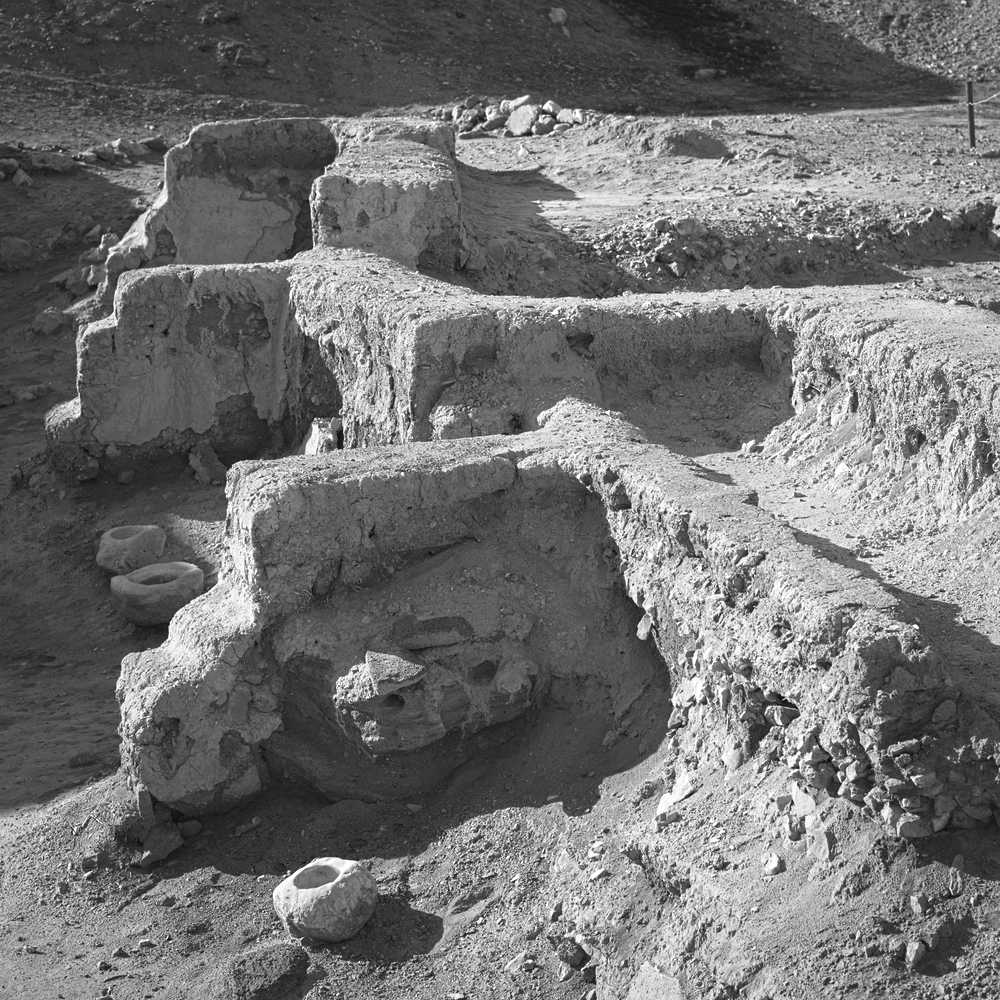
The ancient foundations of Jericho’s walls
When the trumpets sounded, the army shouted, and at the sound of the trumpet, when the men gave a loud shout,the wall collapsed; so everyone charged straight in, and they took the city. - Joshua 6:20
Well, that must be right. I didn’t see a city wall anywhere.
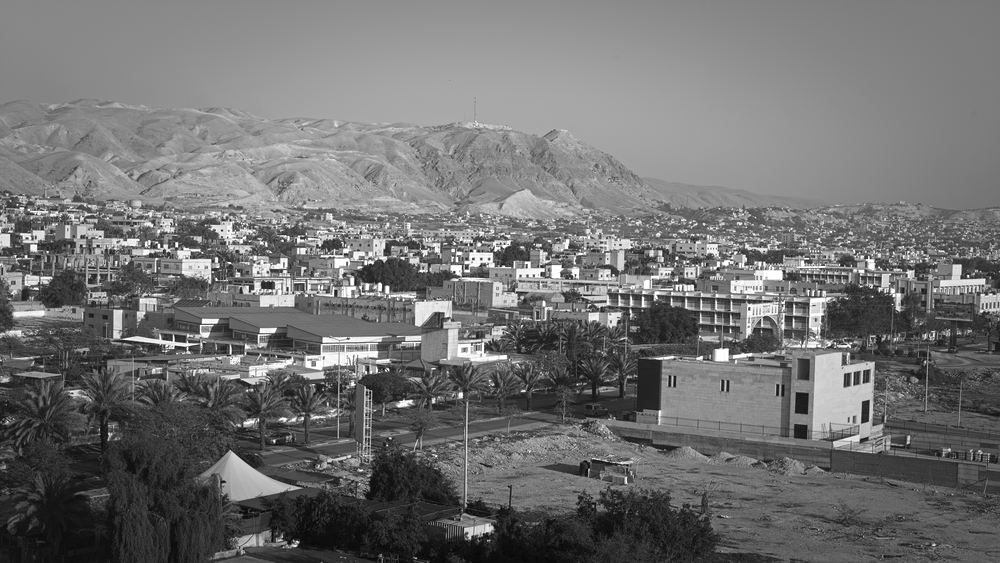
Jericho, Palestine
I have peripateticated to Jericho this morning, and for the first time since beginning my stay in Palestine, will have a chance to explore this cradle of Western Civilization. Jericho is the oldest continuously-occupied city in the world. When the Paleolithic (Old Stone) people ceased hunting and gathering, Jericho was judged premier real estate for mud-brick condominiums.
The city lays in the great gulch of the Jordan Rift Valley, about 800 feet below sea level. Millions of years ago, two tectonic plates—the African and Arabian—pulled apart, splitting the land and leaving a deep gorge that channels the Jordan River south into the Dead Sea.
It is a hot land, filled with long rows of date palms and, for reasons I’ve never understood, flies. The annoying insects are everywhere, and stopping for a moment’s rest will draw a swarm.
Taxi vs. Tour Bus
Jericho also draws the tour buses, ferrying visitors at a breakneck pace around the marvels of the Holy Land. My taxi driver went ballistic when one of these monstrosities chose to execute a three point turn in the middle of the road in front of us. As the monstrosity backed and shuffled, two lines of horn-hammering cars backed up on the two lane road that threads through the center of the city. The bus completed its elegant maneuver. It rolled forward about fifty feet, and then parked in our lane. Passengers dropped like geriatric paratroopers onto the sidewalk. The traffic in the opposing started to roll past, but we were locked in place blocked by the tour bus. The drivers in the opposite lane had no intention of stopping to release a few of the bus’ prisoners.
Enough! My cabbie gunned the nose of our yellow taxi into the oncoming traffic and parked, blocking the other lane. He killed the engine, climbed out of the car, lit a cigarette and took a swig of cold coffee from a paper cup.
The other drivers went berserk—a badly orchestrated symphony of horns exploded. My driver shrugged nonchalantly. If our lane couldn’t move, no one would.
Finally the tour bus driver descended from his lofty perch—tourists were still unfolding themselves from the cramped seats and stretching tortured muscles as they limped off the bus—and after a hurried consultation with my driver, agreed to direct traffic, giving each lane equal time to pass around the bus.
“Police are very bad here,” said my driver, as he reversed back into our lane. “They spend their time sleeping in the station rather than doing their jobs.”
Welcome to the oldest continuously occupied city in the world, a place where people have learned to resolve their differences.
A City on a Spring
Jericho’s history began as the last of the Paleolithic people settled here at the north end of the Dead Sea. The presence of water, rising to the surface from the Ein es-Sultan spring made this an attractive location.
The locals call this “Elisha’s Spring,” a reference to 2 Kings 2:20. Here in Jericho, Elijah ascended to heaven in the fiery chariot and the prophet’s mantle passed to his disciple, Elisha. When it became evident that the senior prophet was not going to return, the locals asked Elisha to do something about their foul water supply. The new prophet in town filled a bowl with salt and sprinkled the crystals over the water. The healed spring produced fresh, clean water from that time onward.
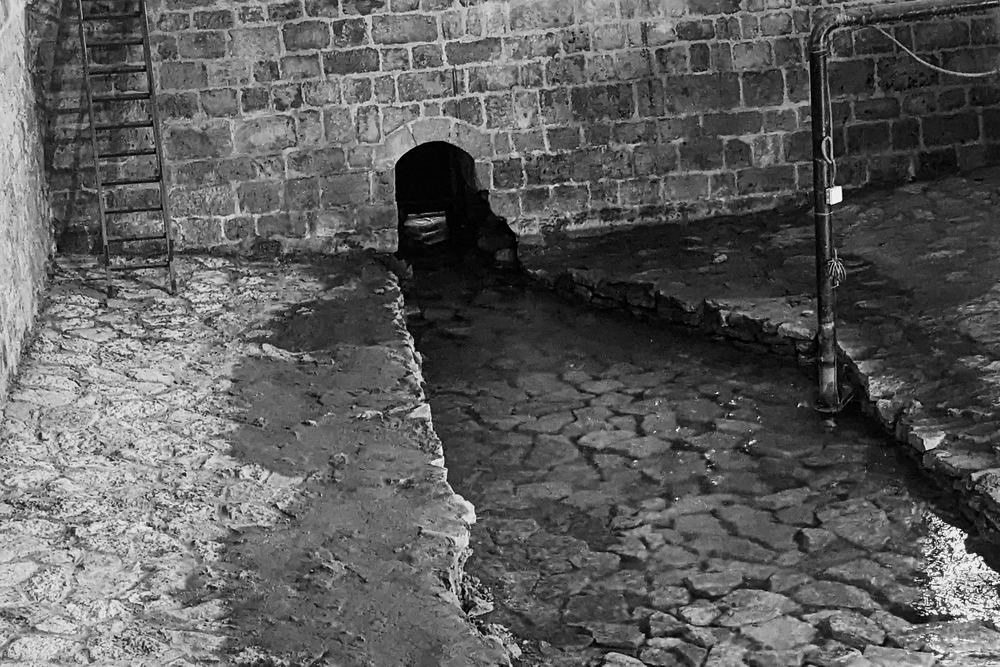
Ein es-Sultan Spring
The water supply drew Paleolithic hunters to the site. The earliest archaeological finds suggest this was a hunting camp. Around the year 9,000 BC, the first permanent structures arose, built from baked mud bricks.
The Neolithic Era had begun.
A Visit to the Tell
The remains of this ancient people are found in the Tell es-Sultan, a large group of brown hills that sit northwest of the modern city center. The sun was edging toward the western rim of the Jordan Rift Valley when I arrived at the site. If one didn’t know that incalculable archaeological treasures lay beneath one’s scuffed hiking shoes, the place wouldn’t be very impressive.
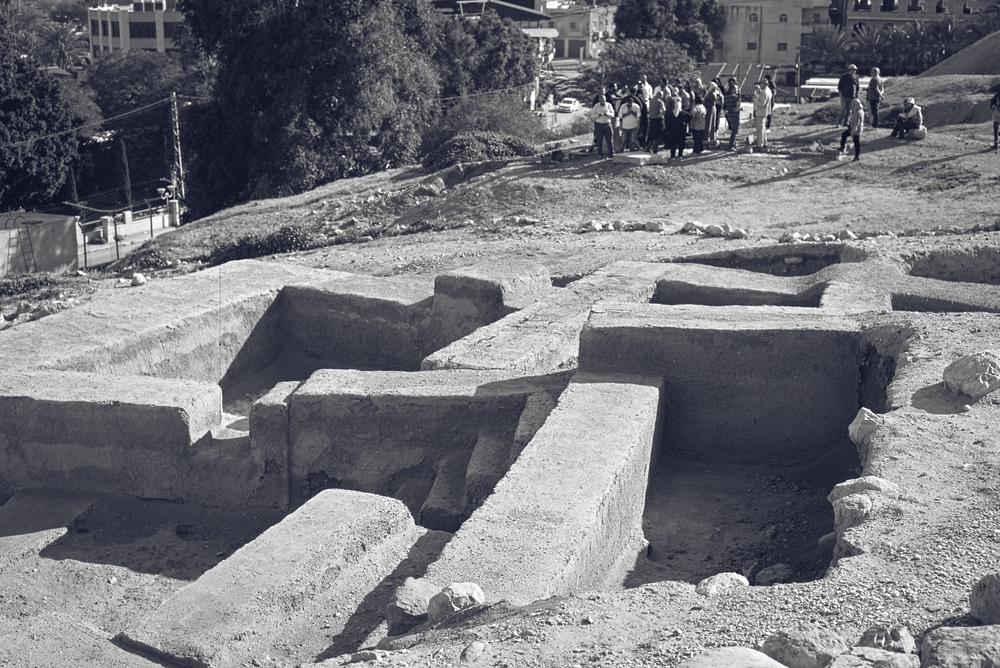
Ancient Foundations.
A trail follows the contours of the desiccated hills, passing the occasional open pit that reveals the strata of human habitation. As the millennia passed, structures collapsed or were leveled to build new edifices. Rather than clearing the rubble of demolished buildings, the people of Jericho built on top of the existing ruins, slowly raising the height of the town as the centuries slipped by. The pits carved into the side of the hills reveal the remains of past renovations, layered atop each other like the side of a piece of shale.
As humans settled into Neolithic communities, they built defensive walls to protect themselves and their property. According to the biblical stories, Jericho was the first city the Israelites encountered when they crossed the Jordan River to occupy the Holy Land. The book of Joshua notes that the city was surrounded by an impenetrable wall, too sturdy to be overwhelmed by the Jewish forces. The wall, as noted at the beginning of this post, was destroyed by a miracle—after Joshua and the community marched around the city for seven days, they blasted their trumpets, shouted, and the wall fell in.
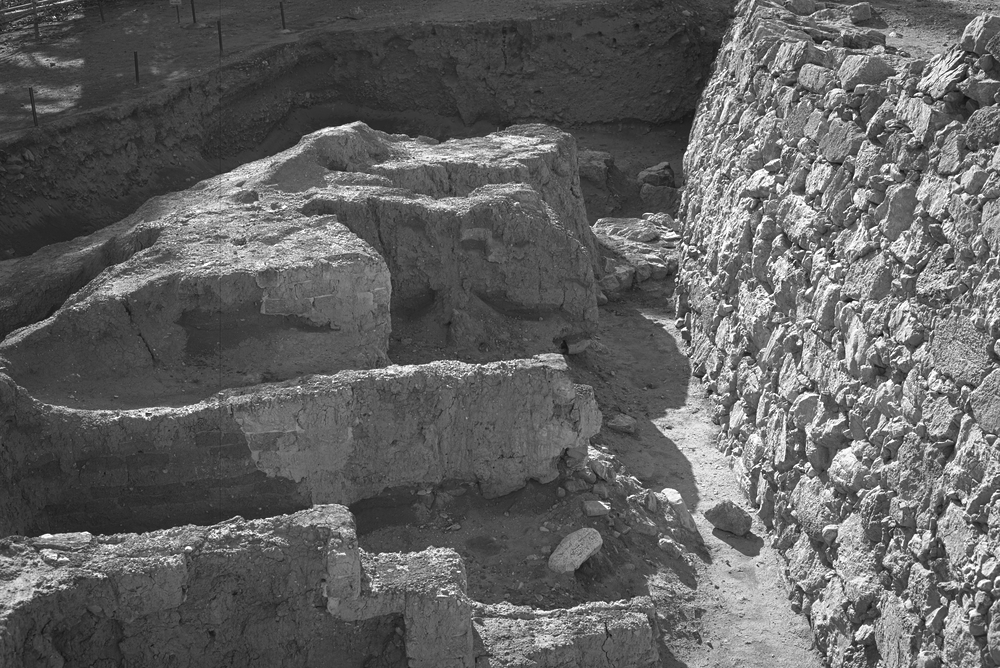
Foundation of Ancient Wall
Although the city did possess an ancient wall, archaeologists have found no evidence to corroborate the biblical account. No remains of a wall, brought down around 1,400 BC, have been found.
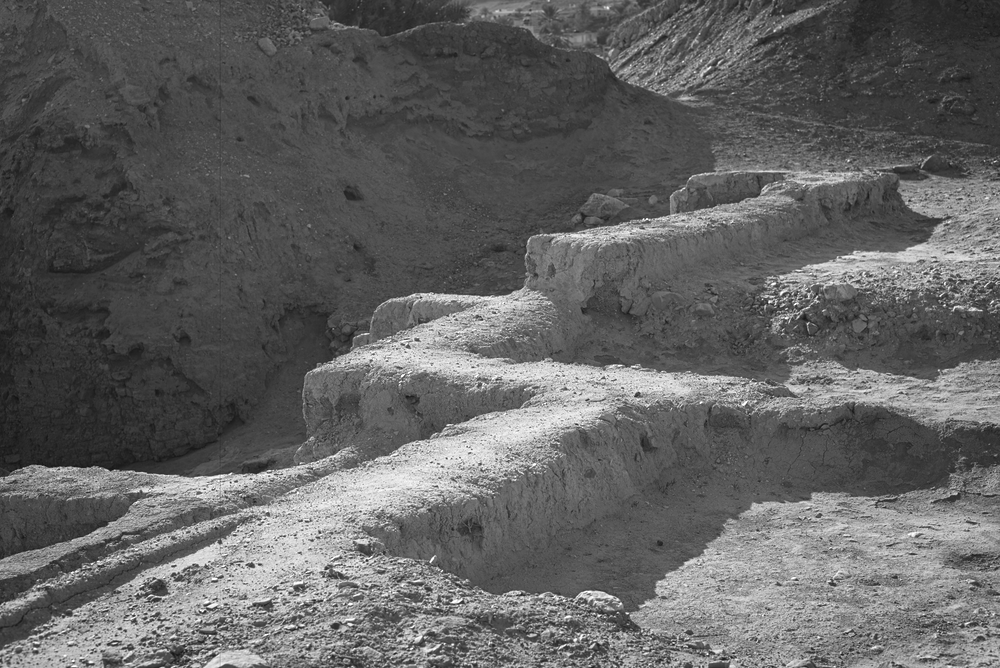
Neolithic Foundations
A successful visit to the Tell requires a strong burst of imagination. In itself, the lines of ancient bricks and smooth bulges of ancient foundations, appear unimpressive. What matters is what these nondescript artifacts symbolize: in this place, eleven thousand years ago, humans began to experiment with a settled lifestyle. They made the great leap forward from nomadic wandering to the formation of an early village. It takes a village, wrote Hillary Clinton, and she was right. Without this great spark, this evolutionary jump, the qualities we humans take for granted, the experiences that separate us from the other animals—like a taxi driver’s road rage—might not have happened.
If you are enjoying this series, why not subscribe to Richard's monthly newsletter, What's New in Old News? The Peripatetic Historian is on the road, roaming the world and compiling fresh adventures. Don't miss out. Click here to join the legions of above-average readers who have already subscribed.